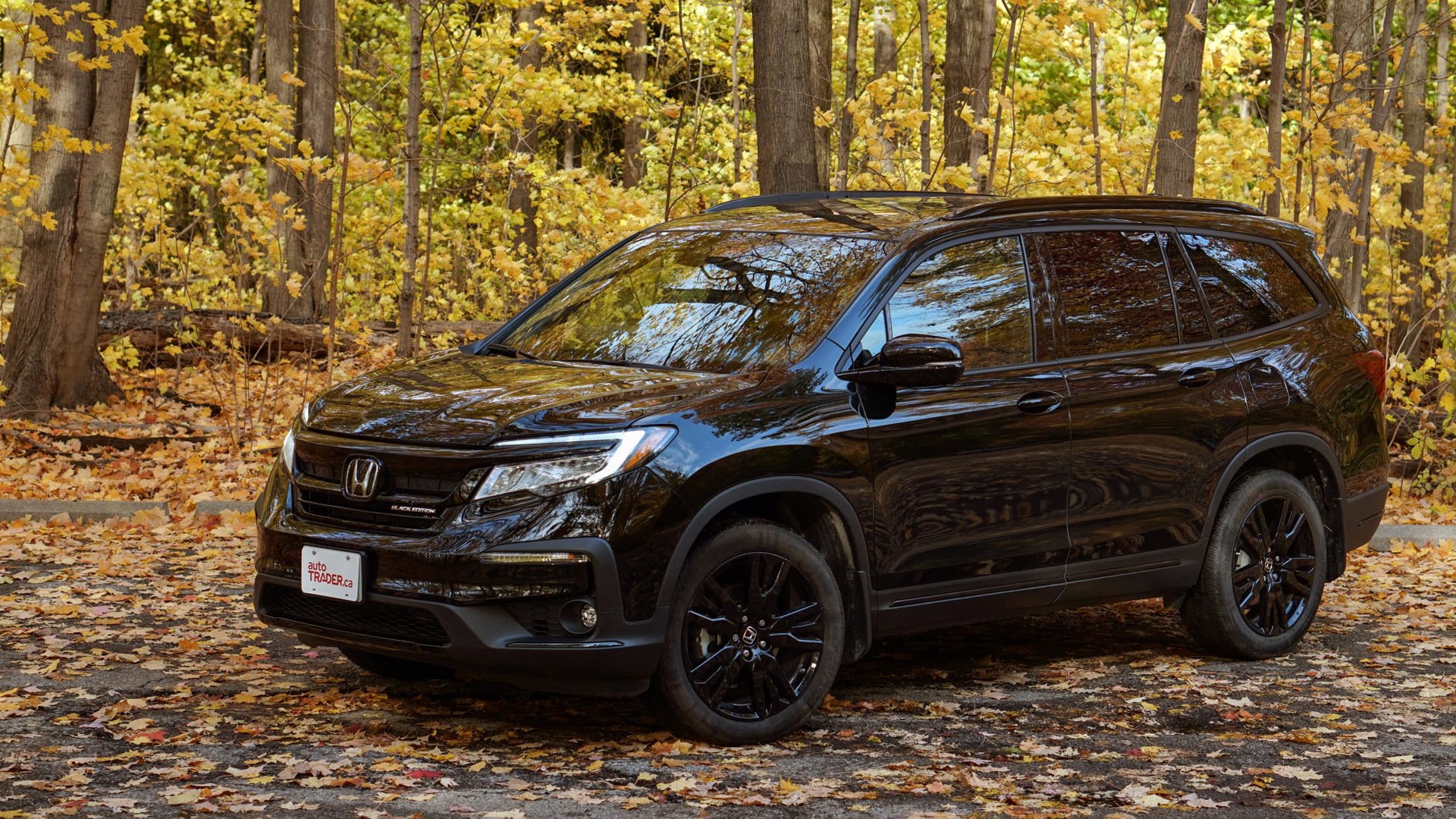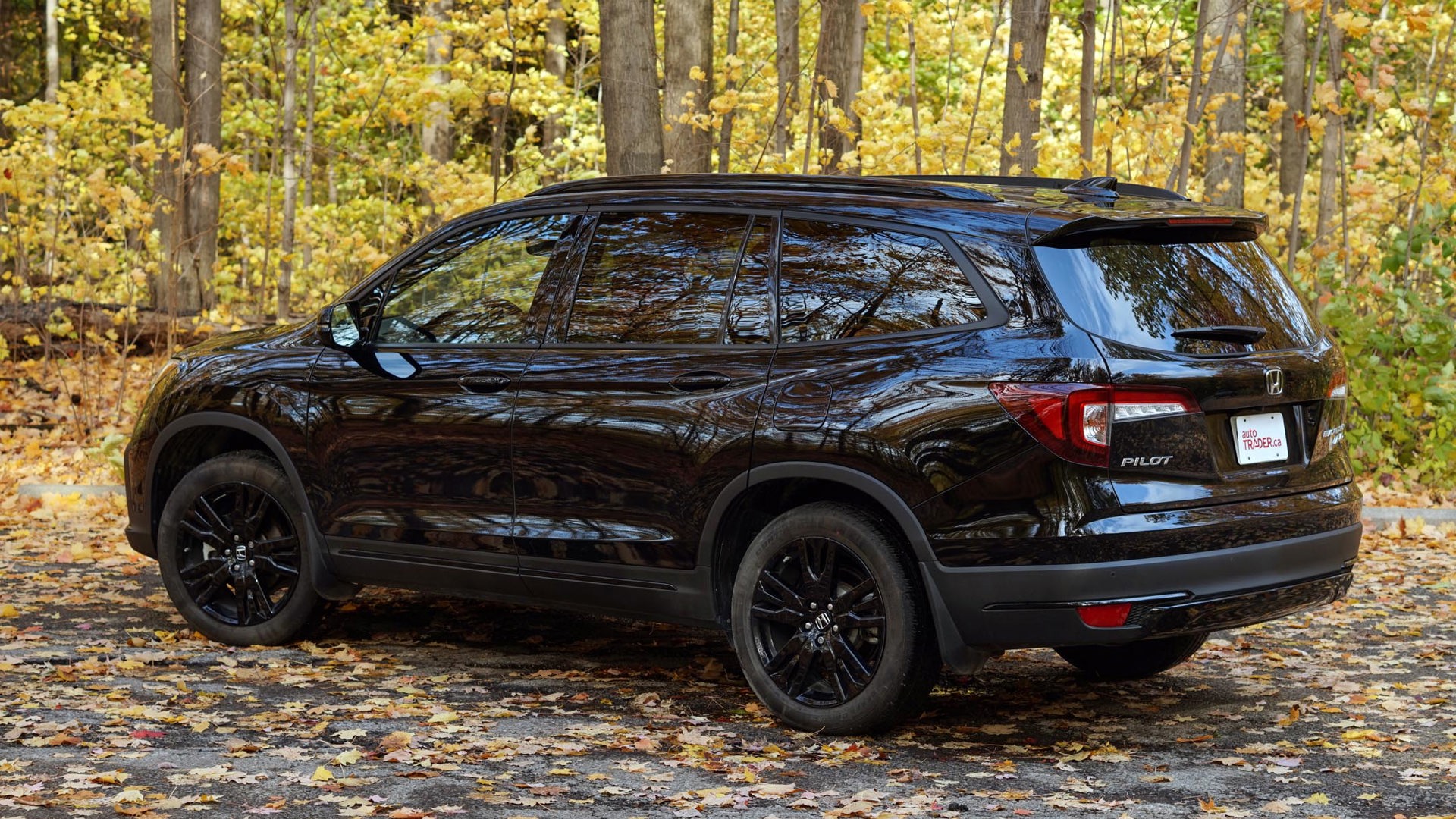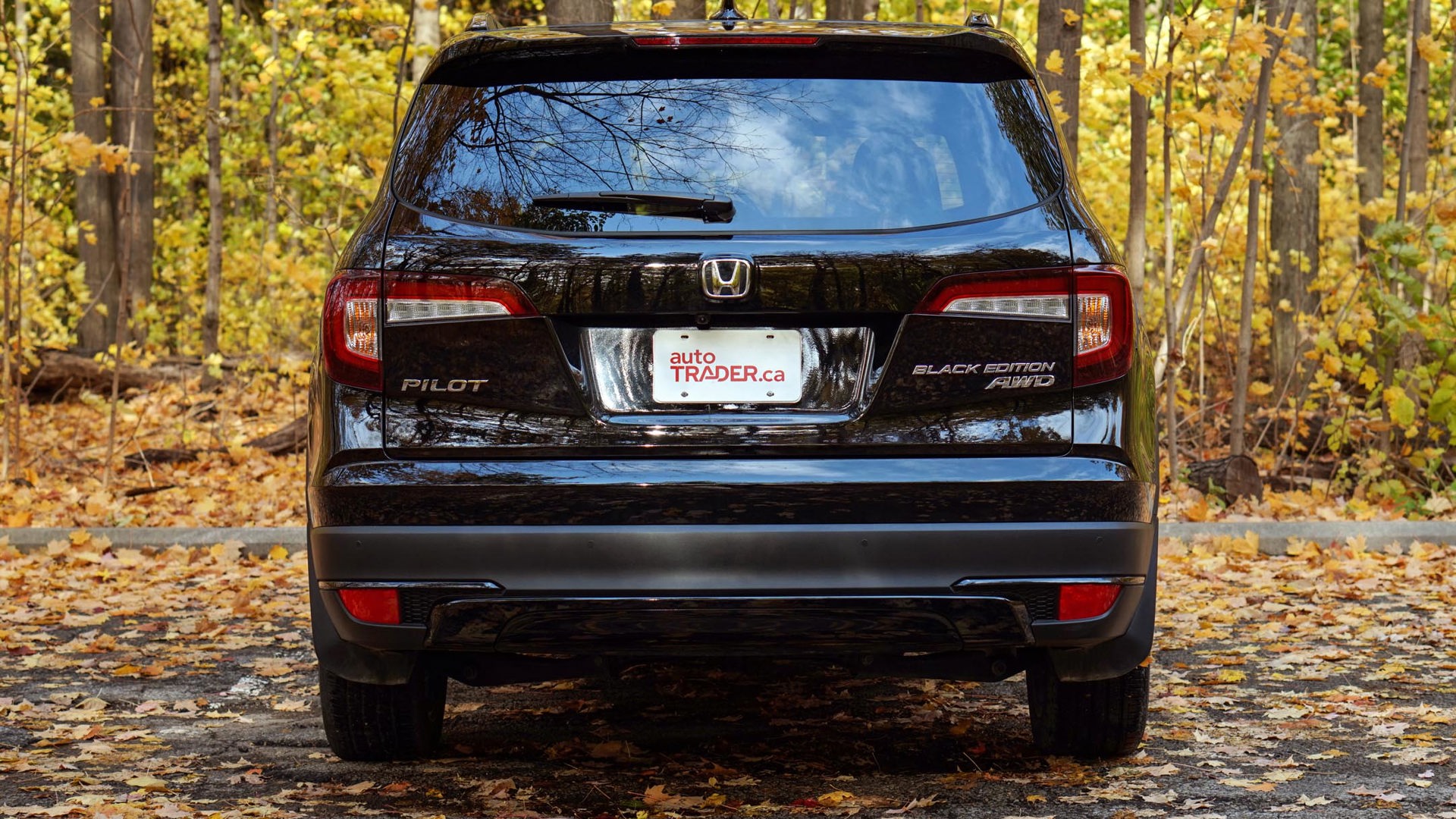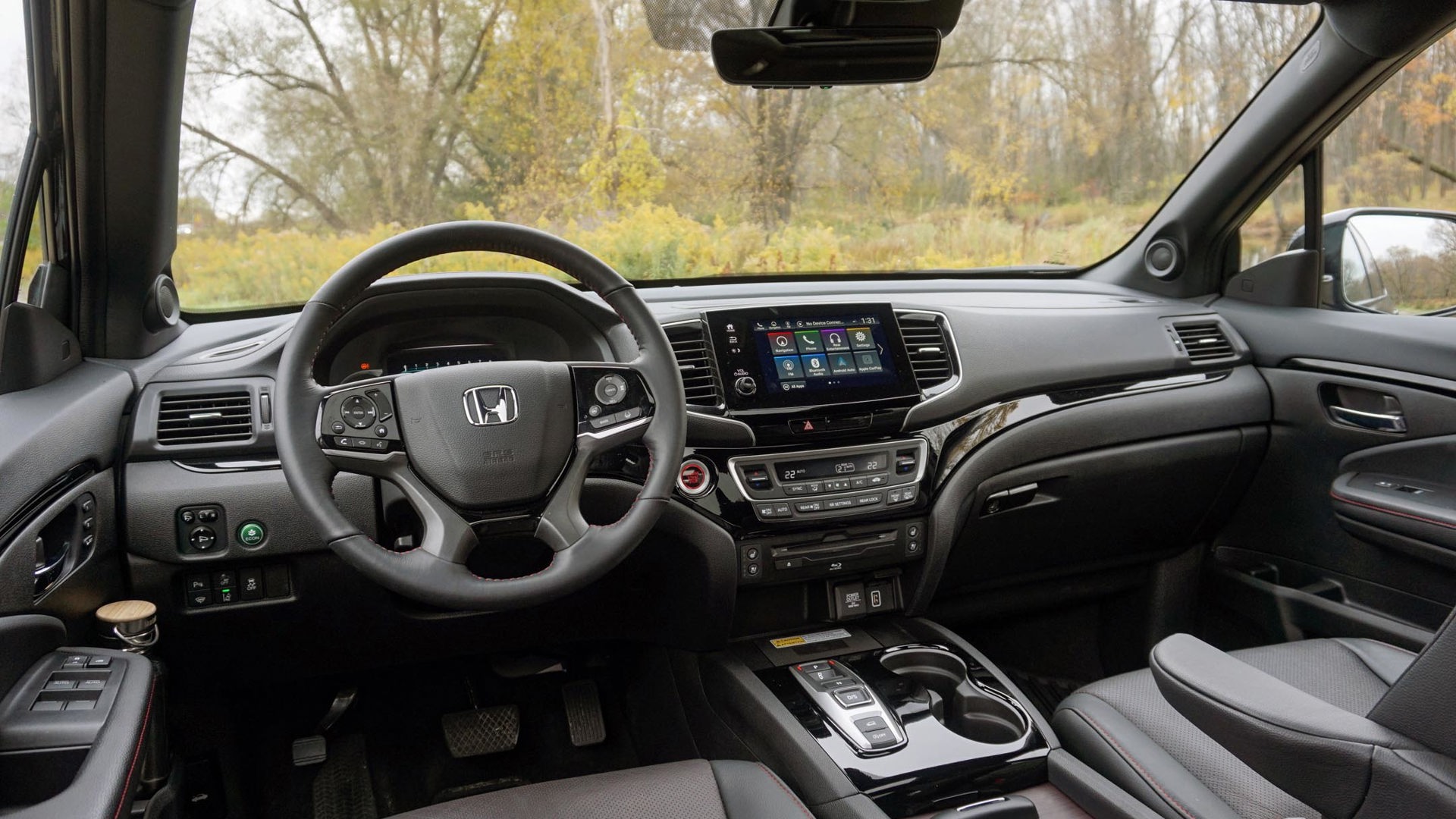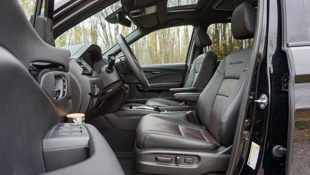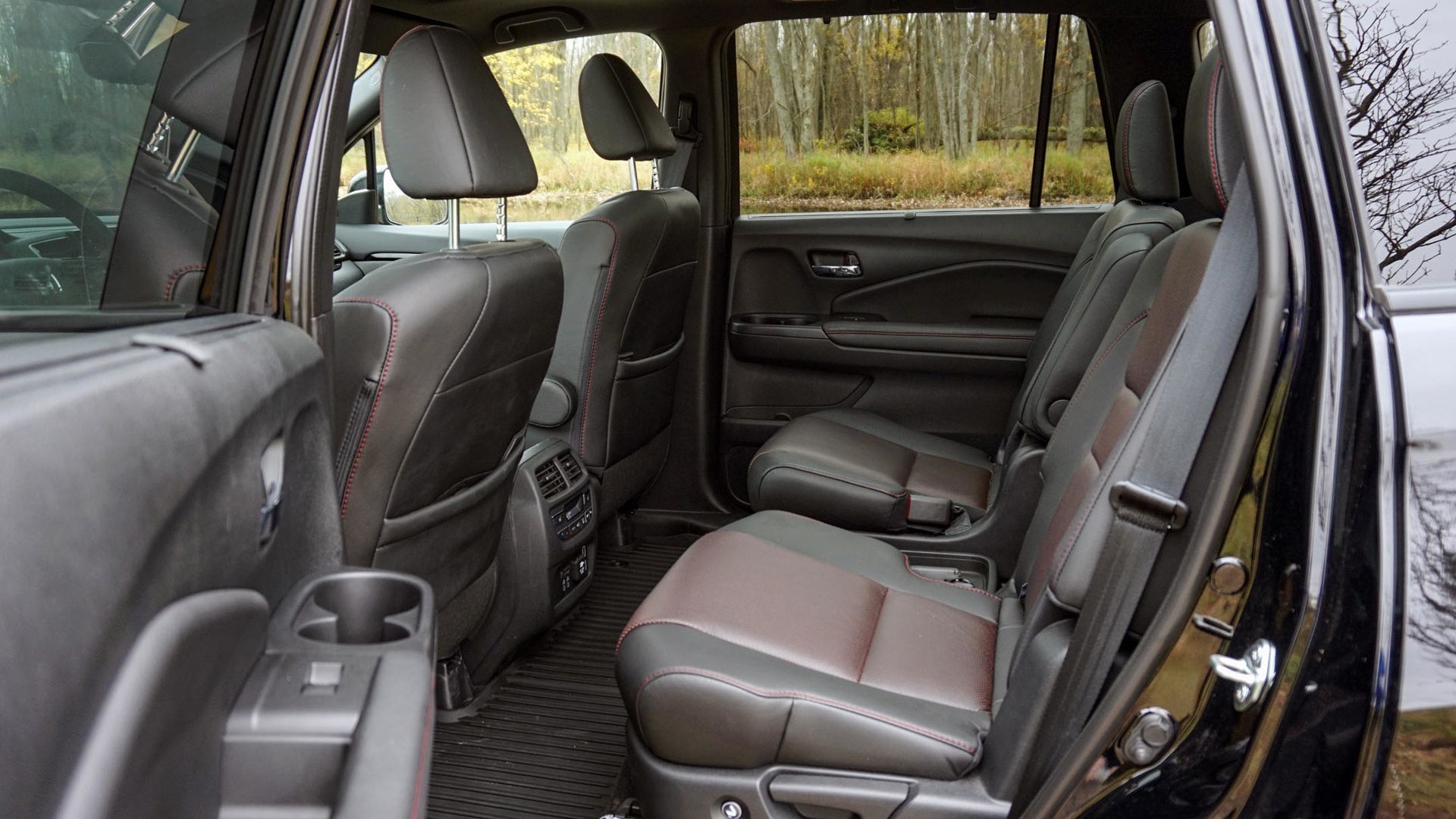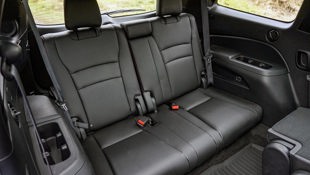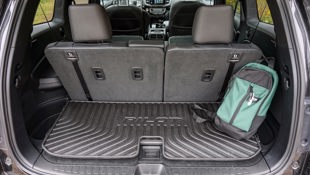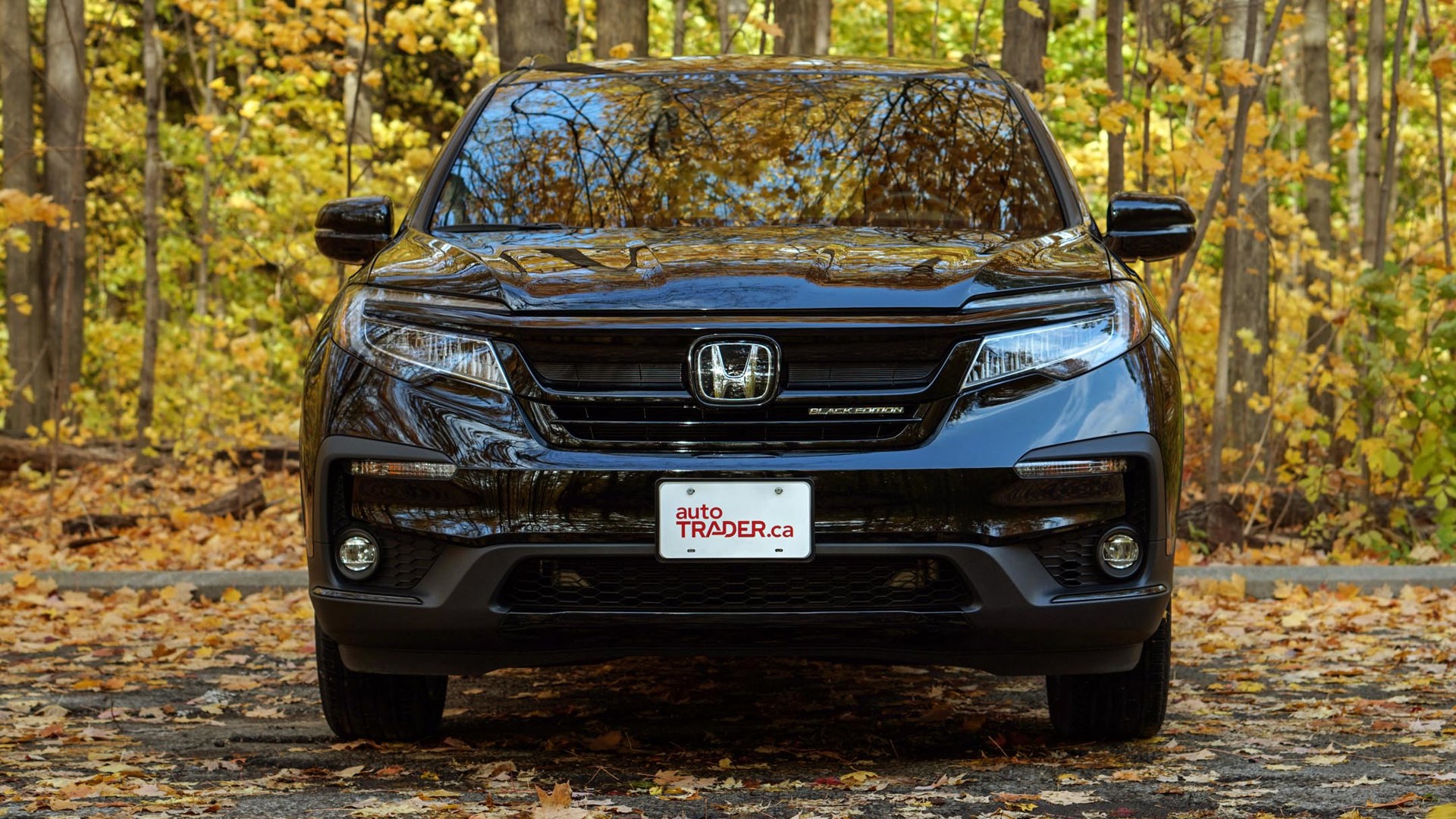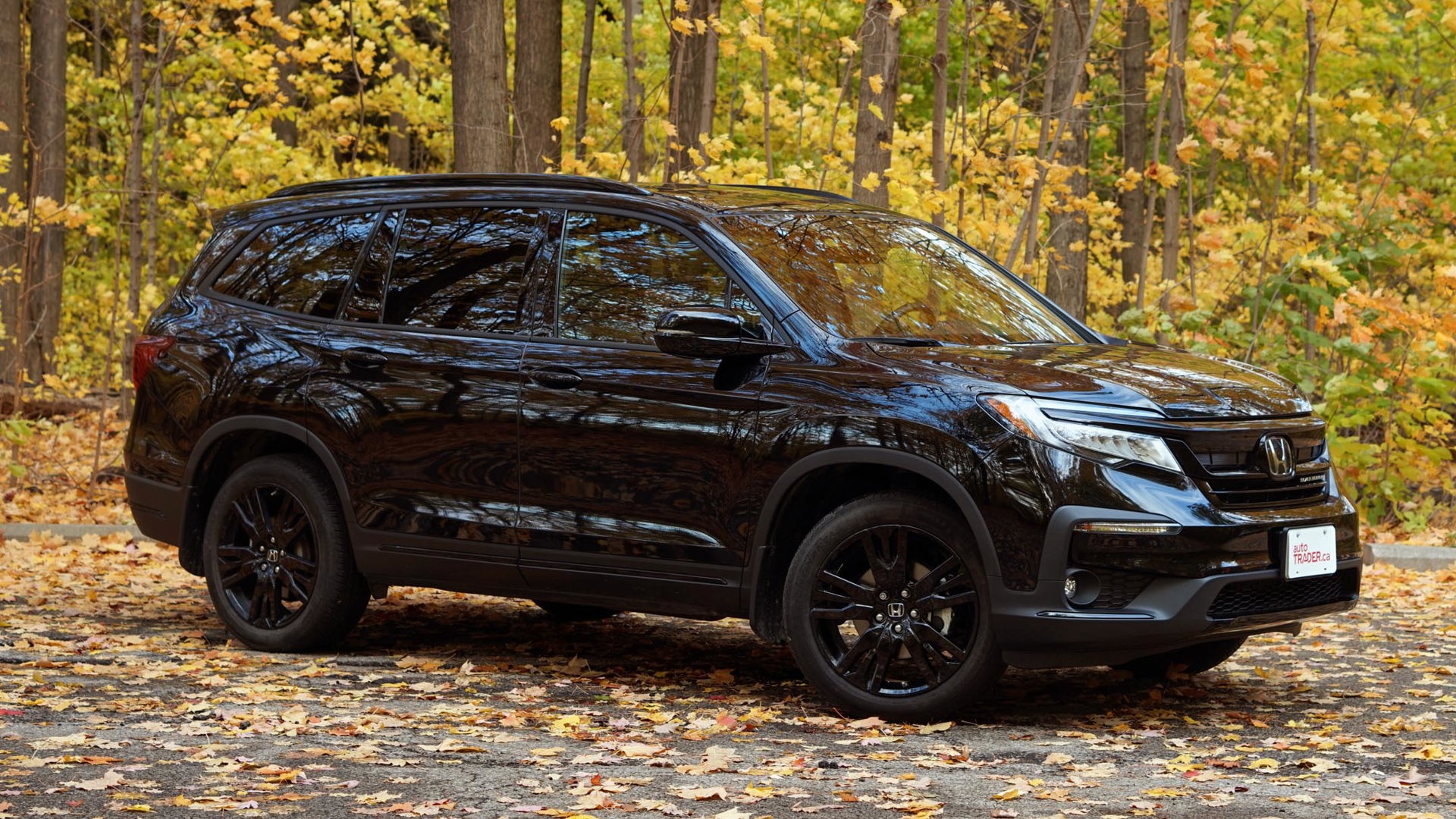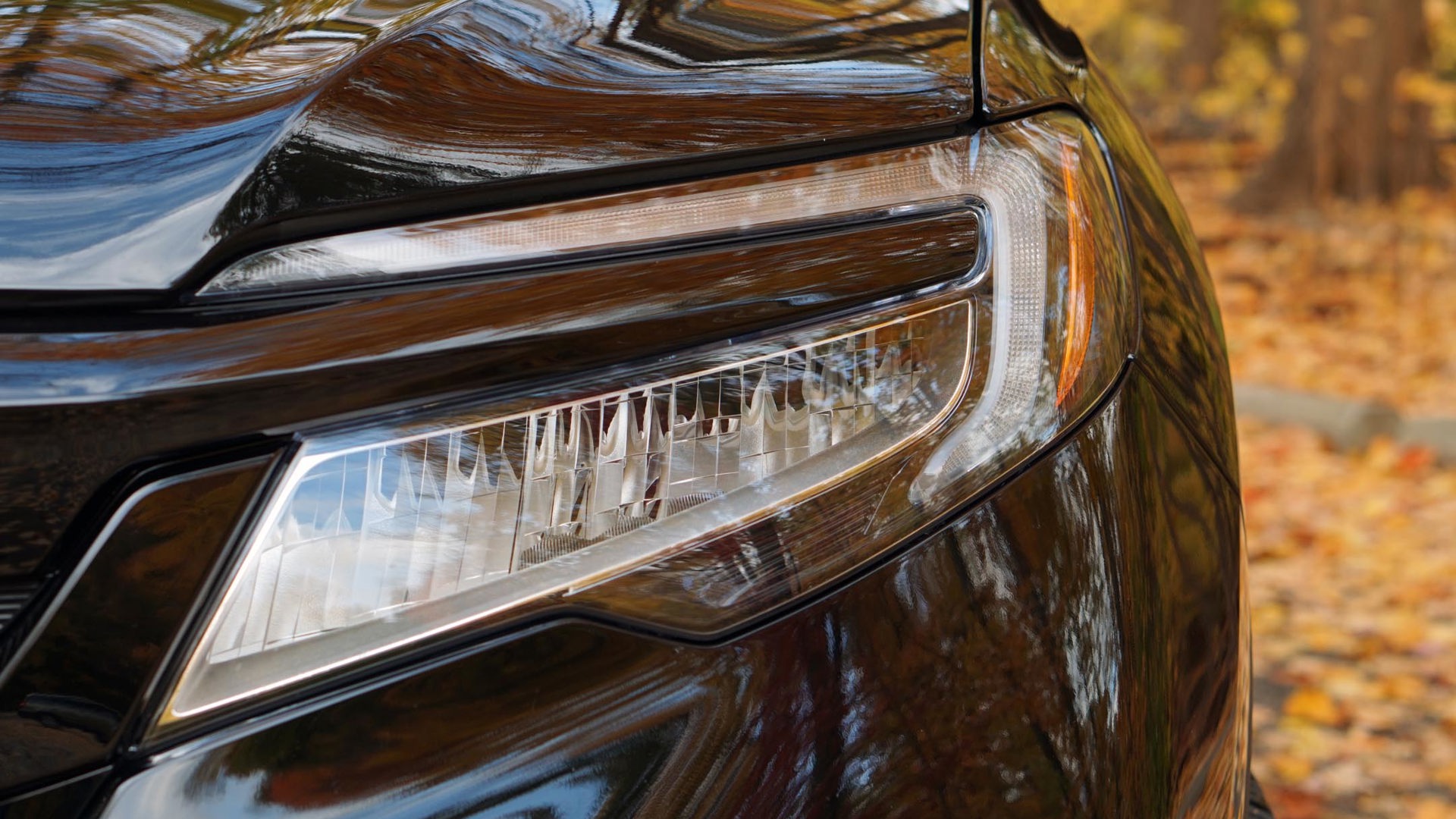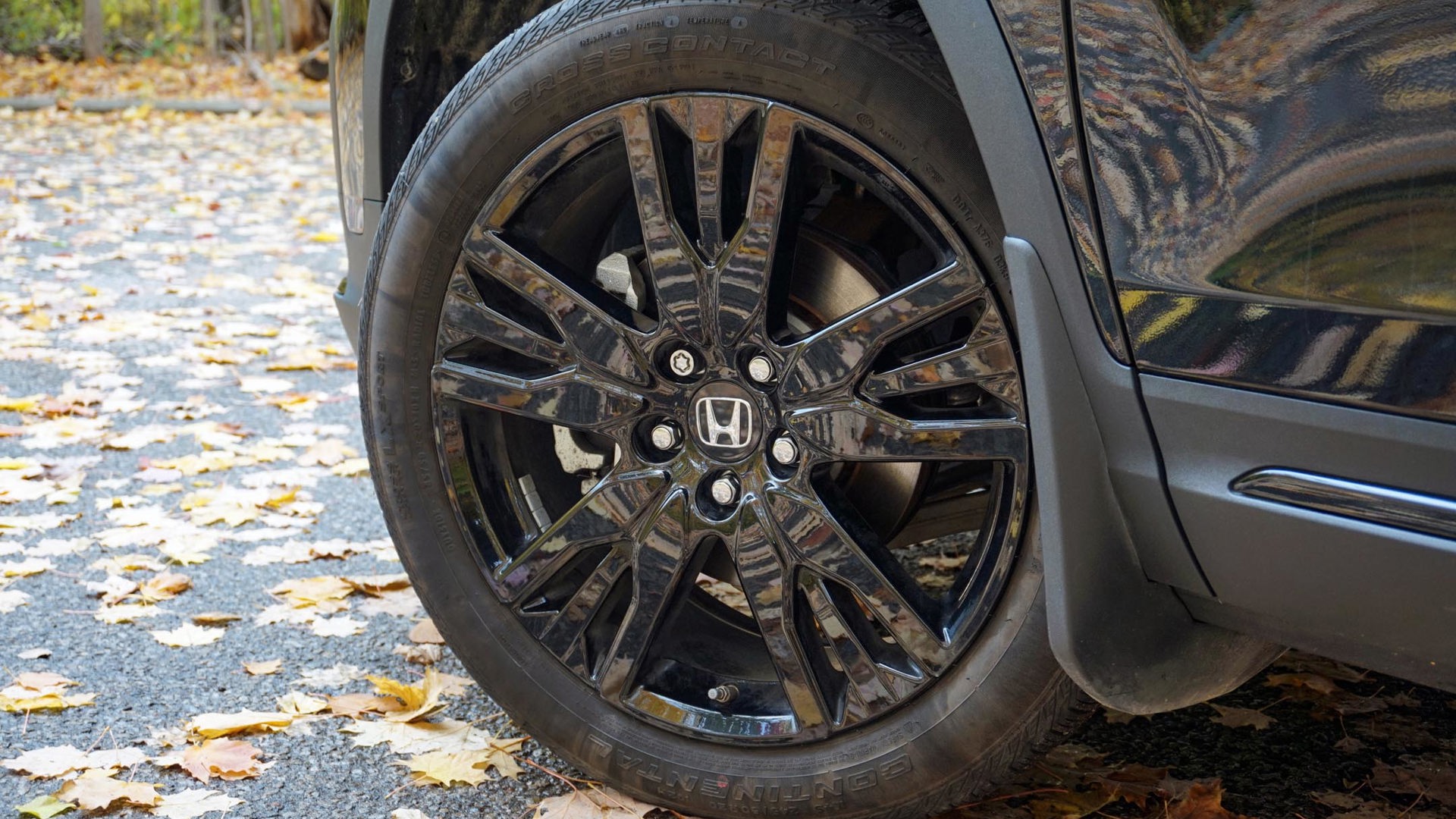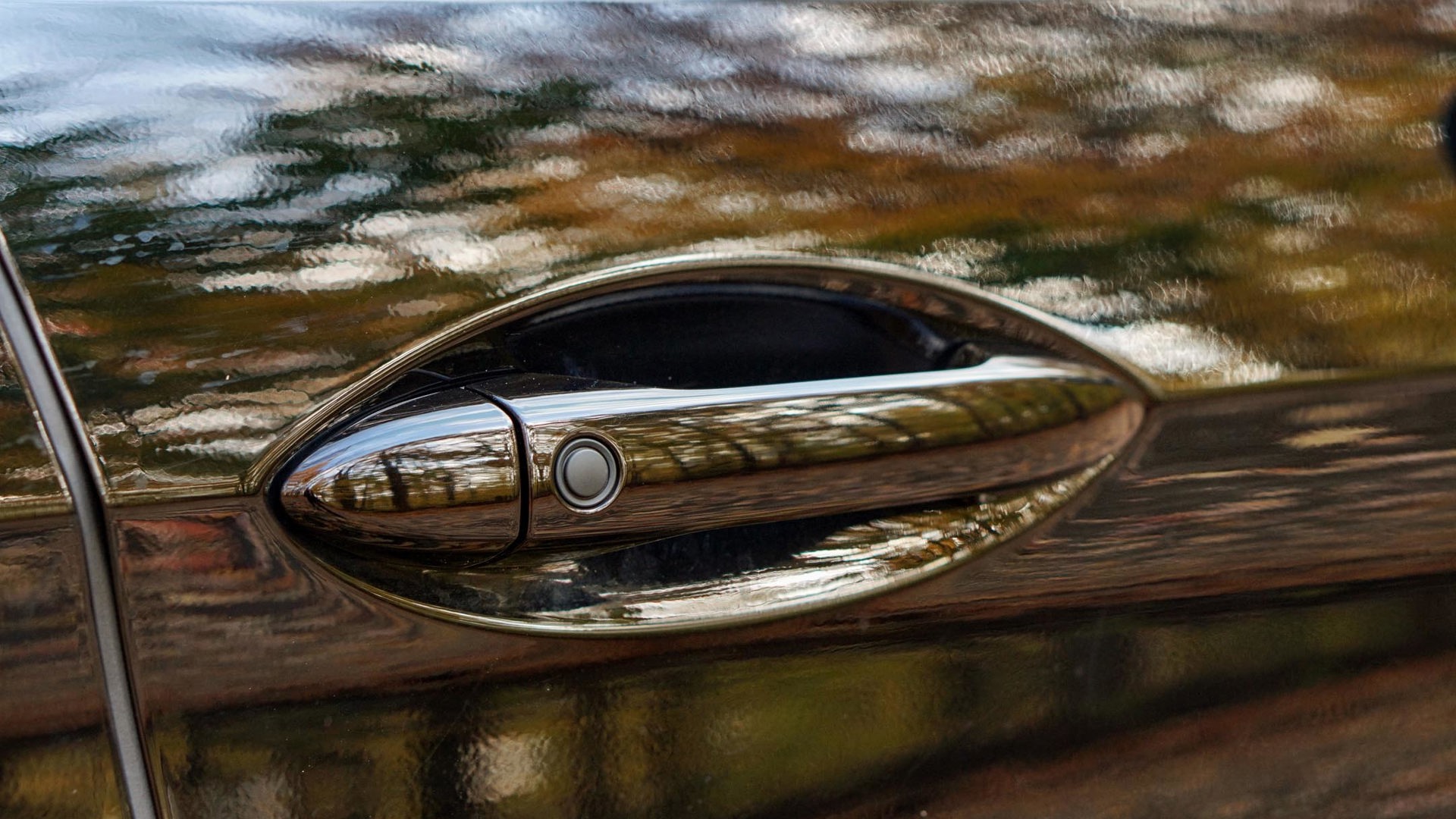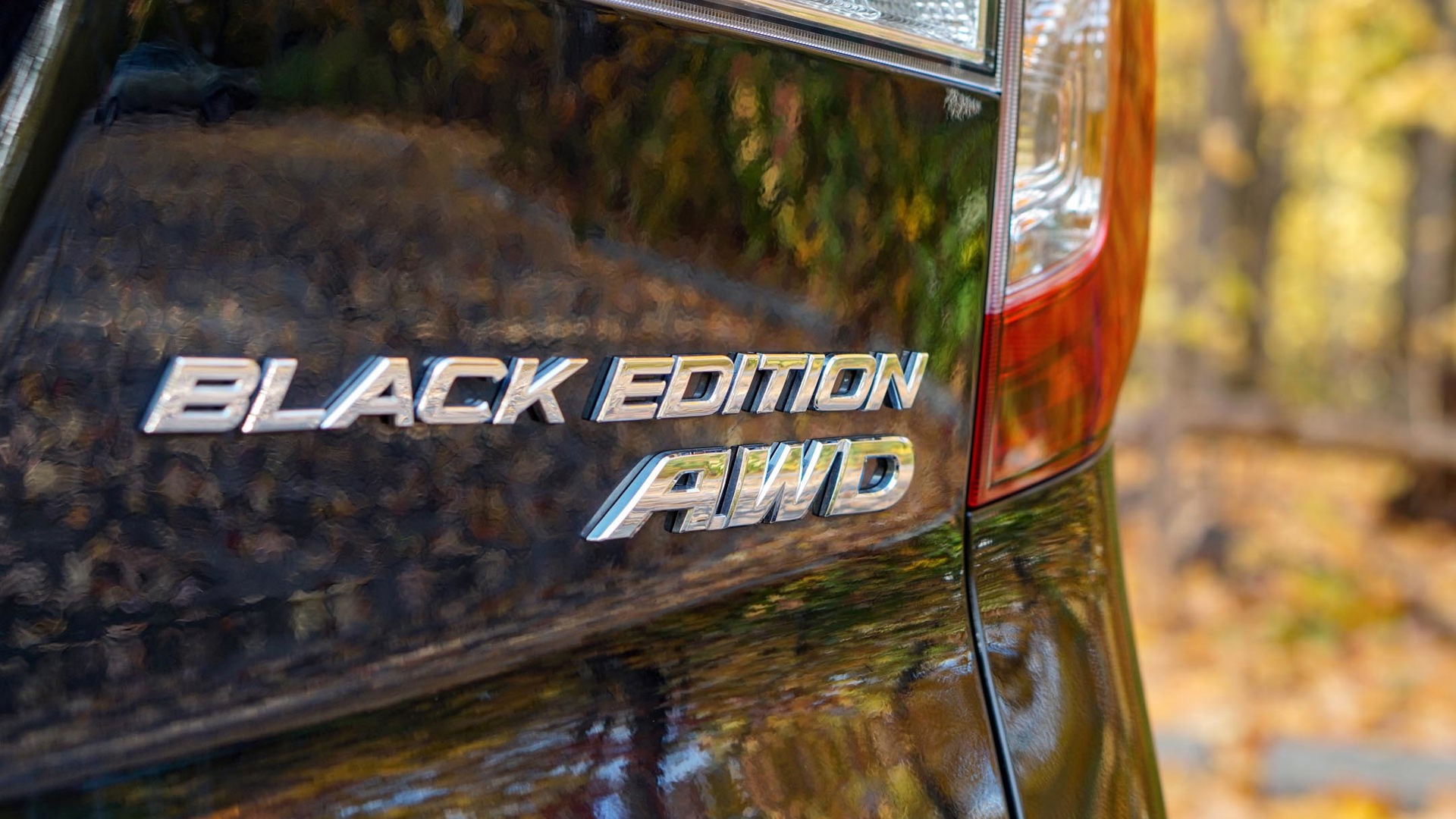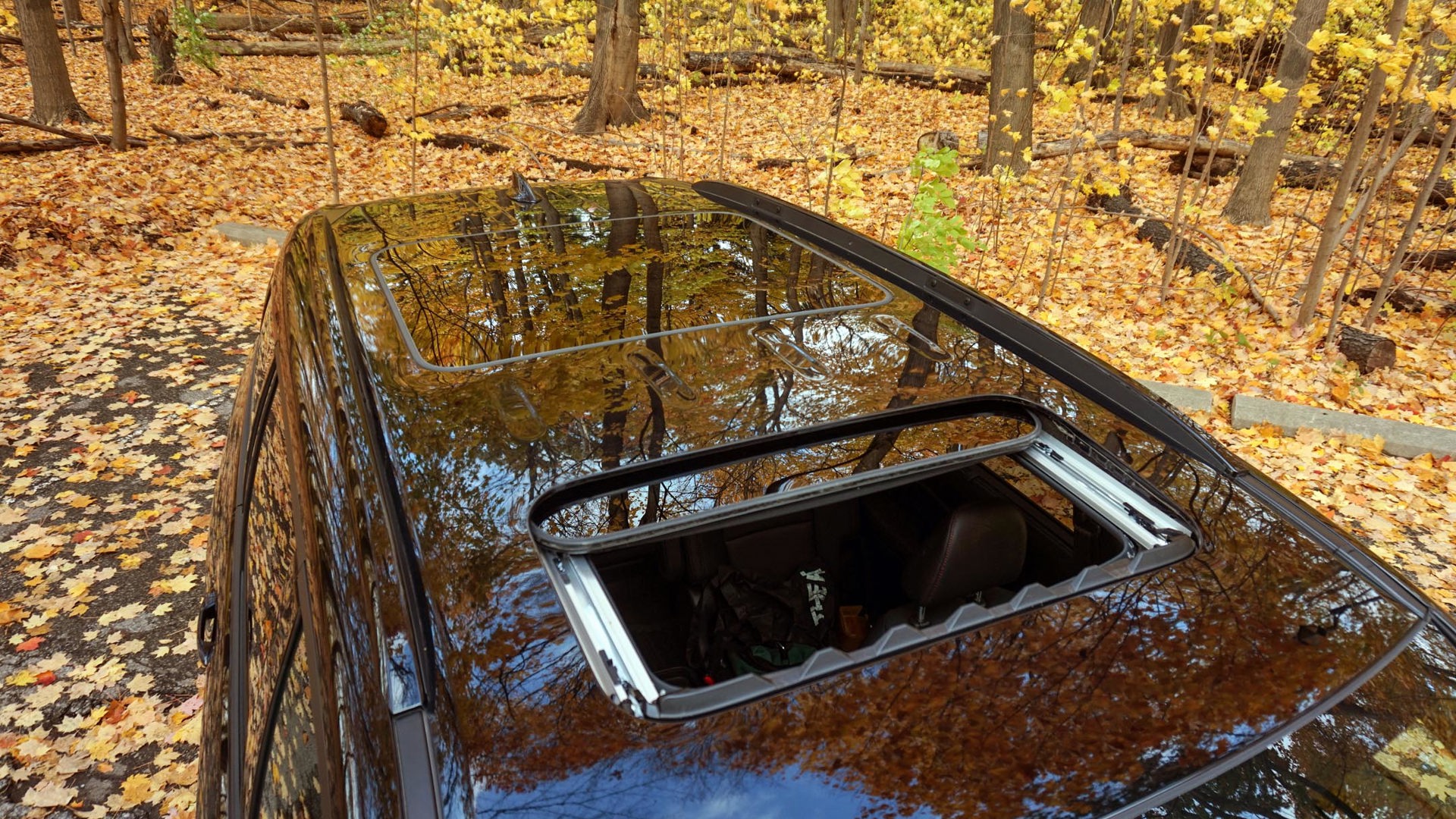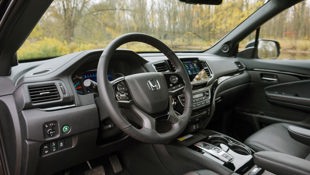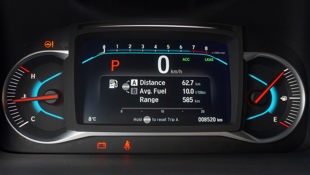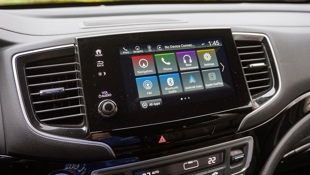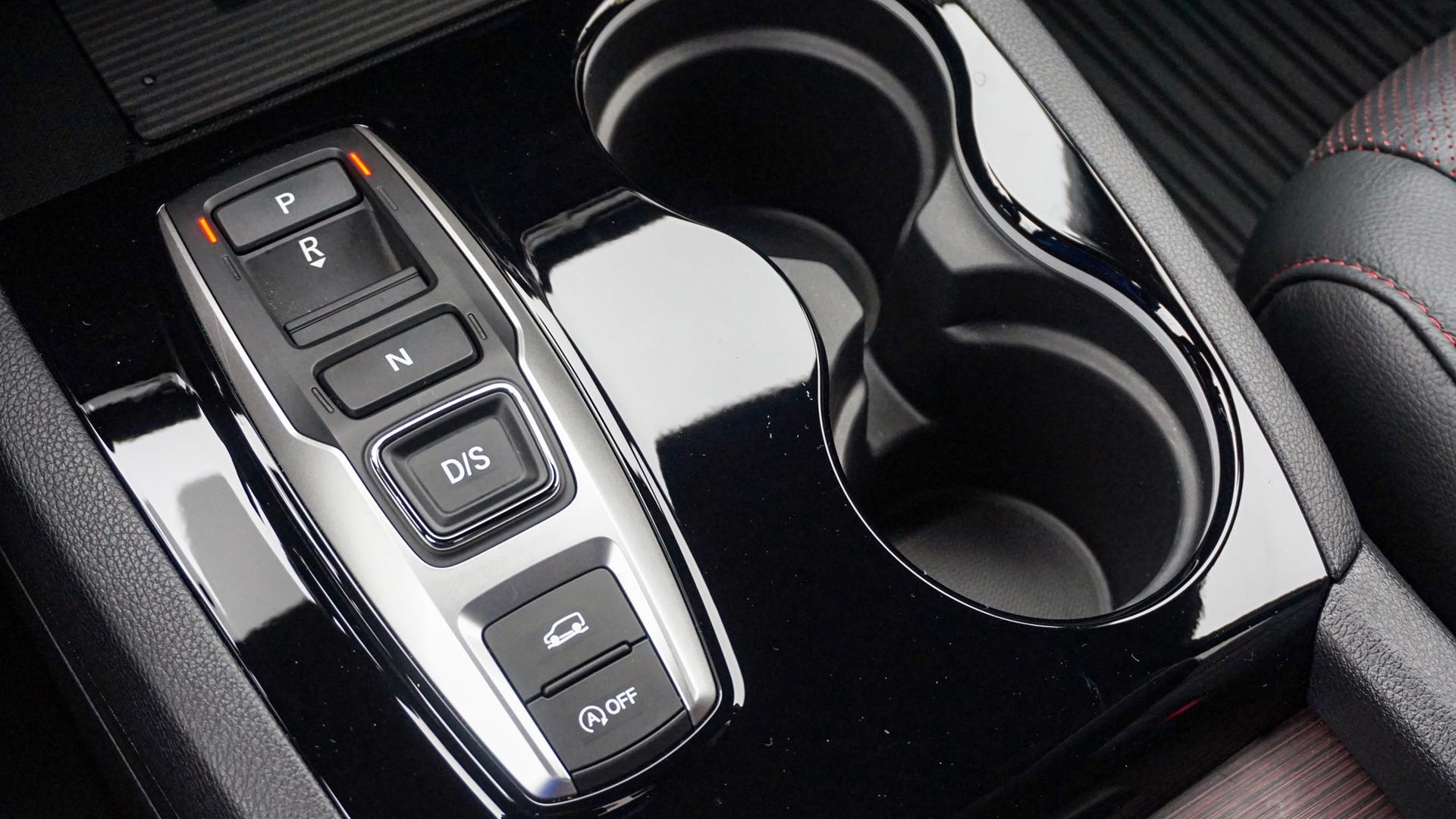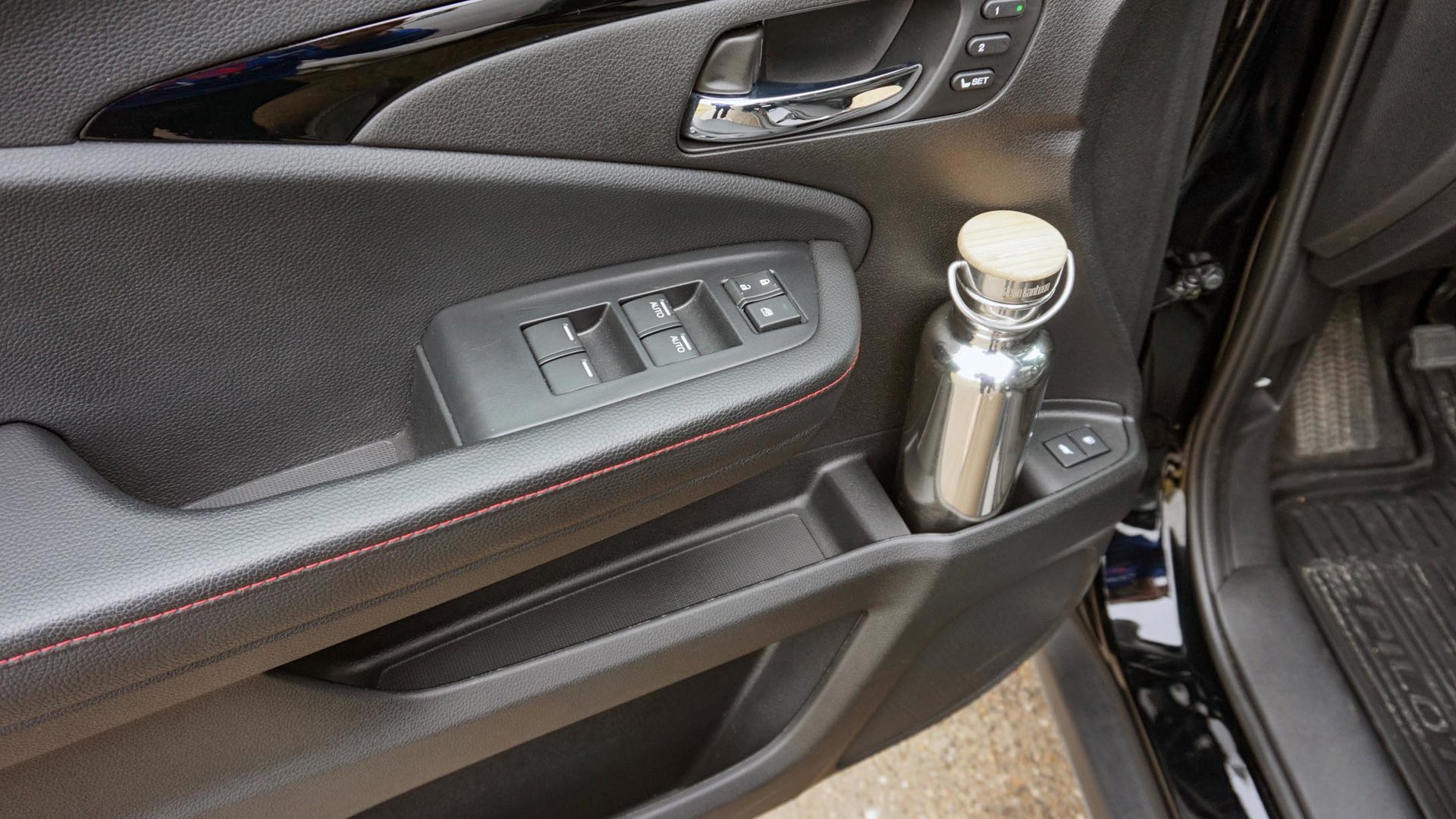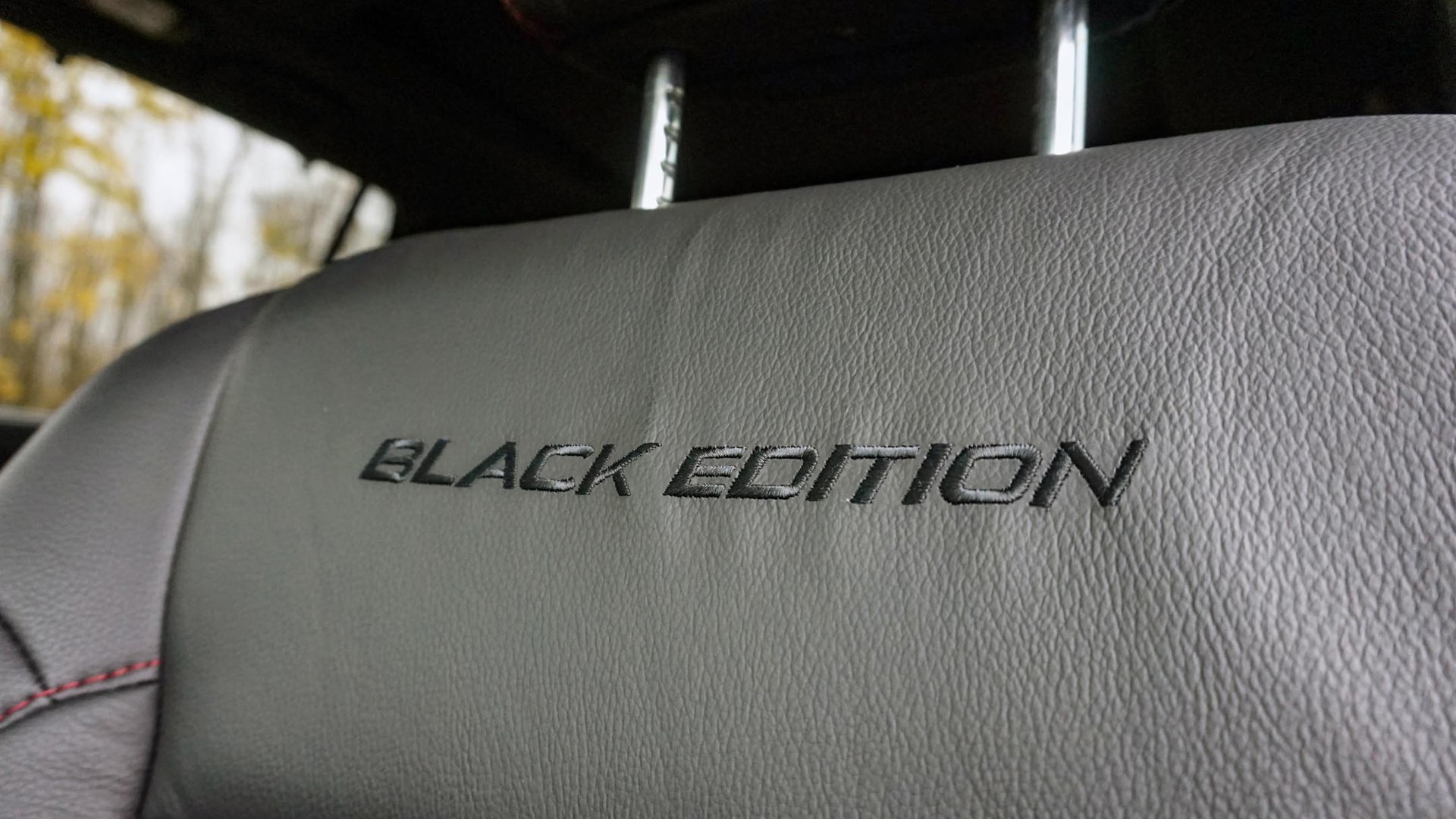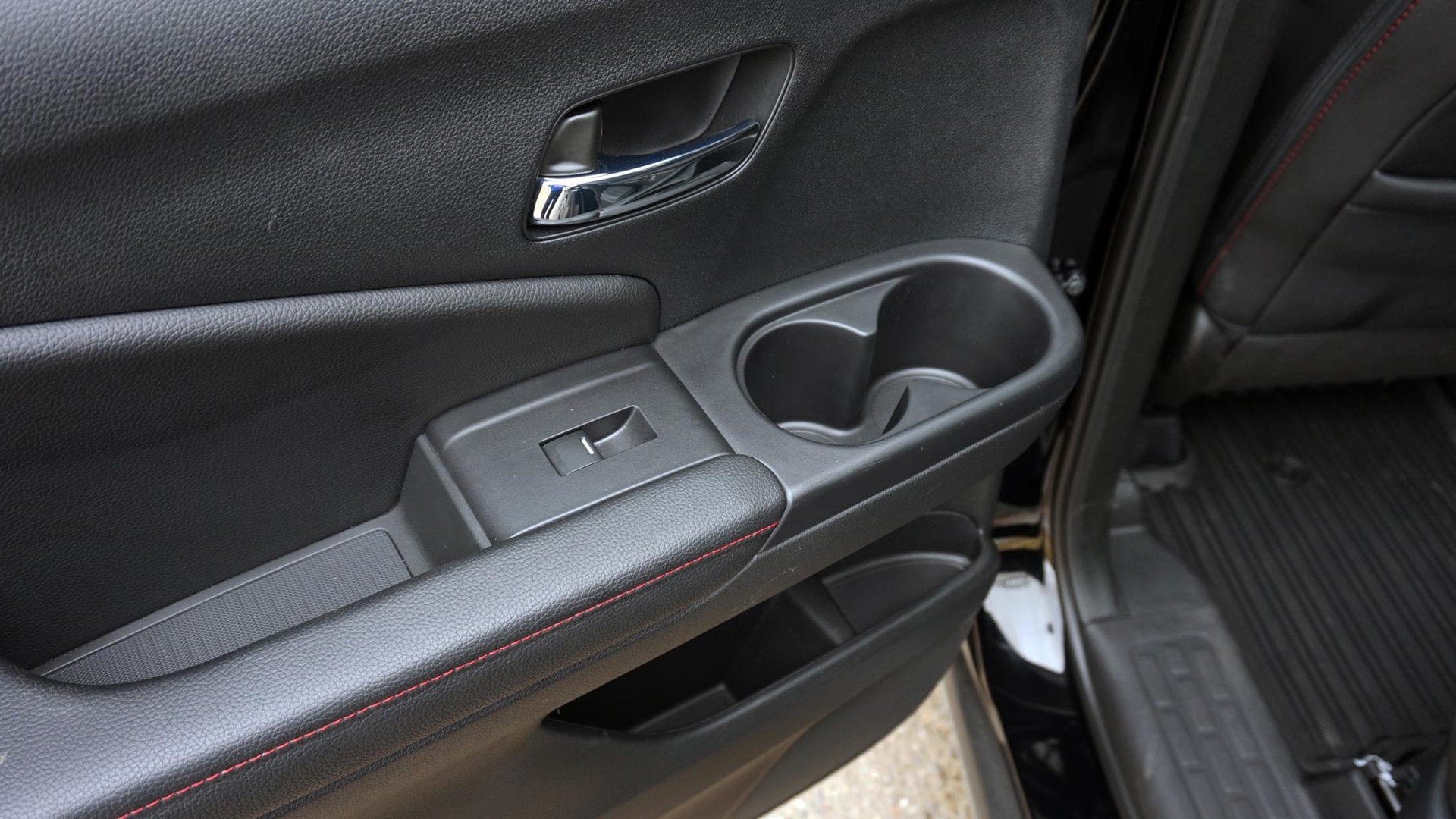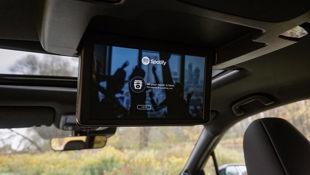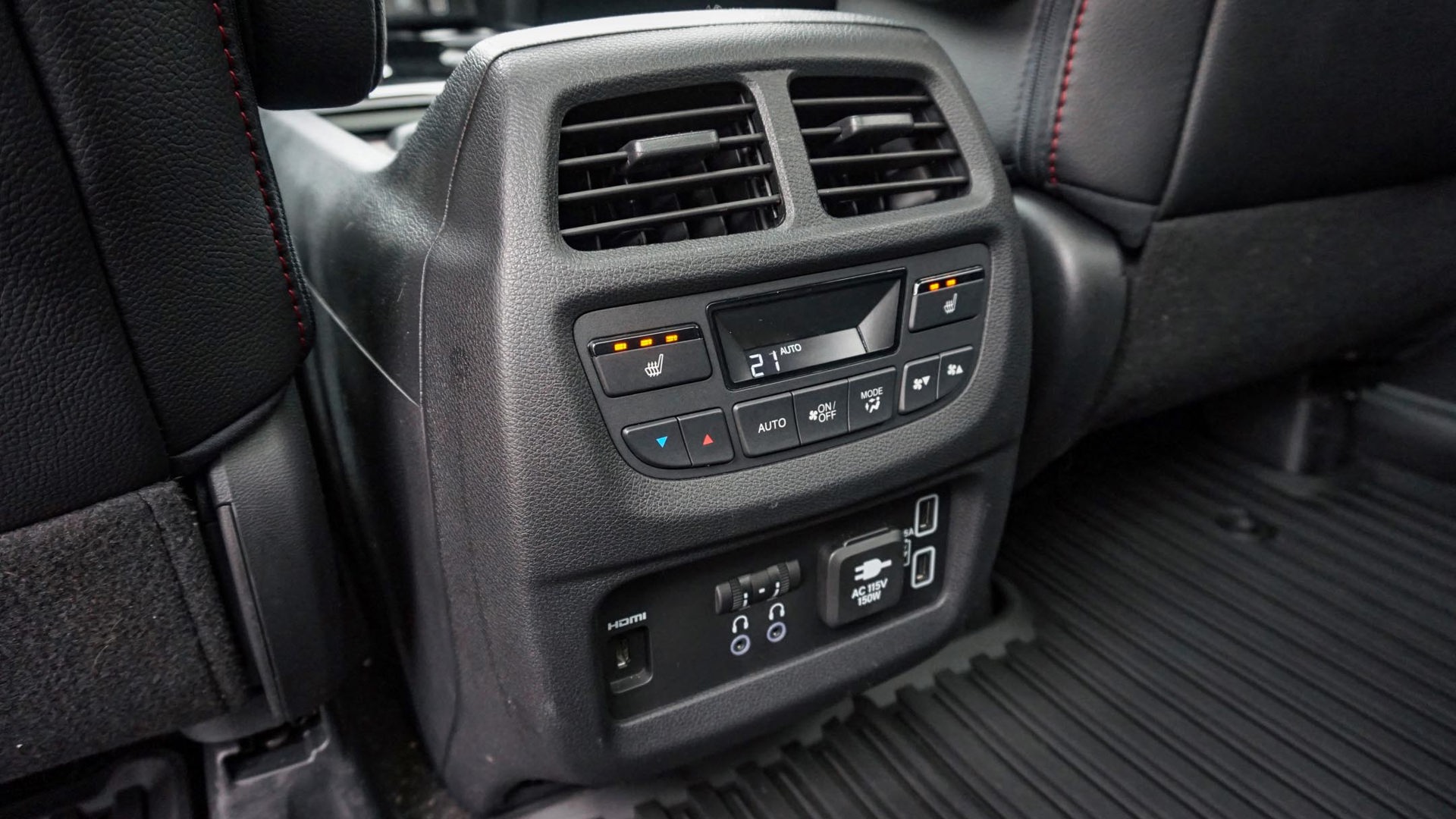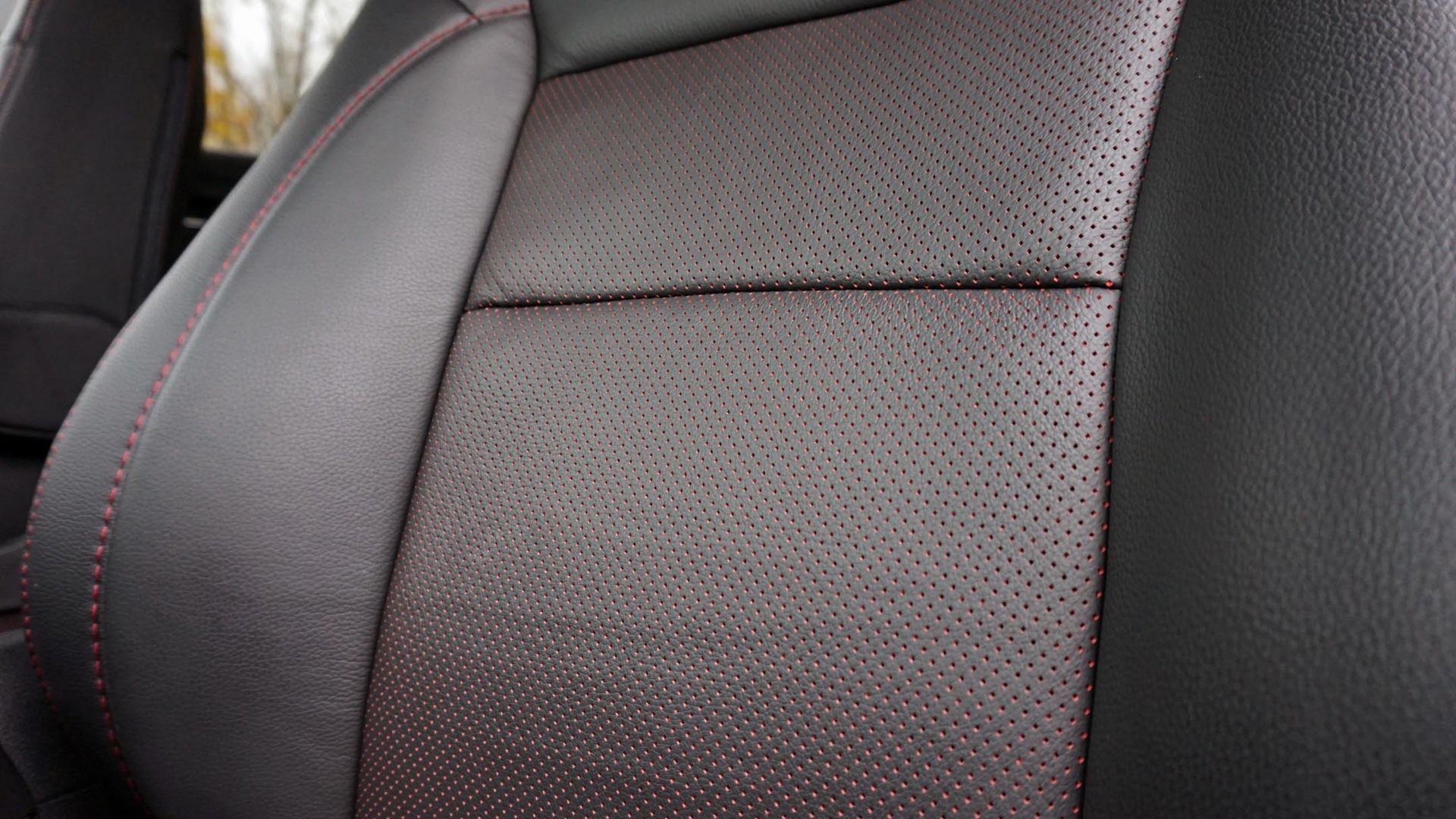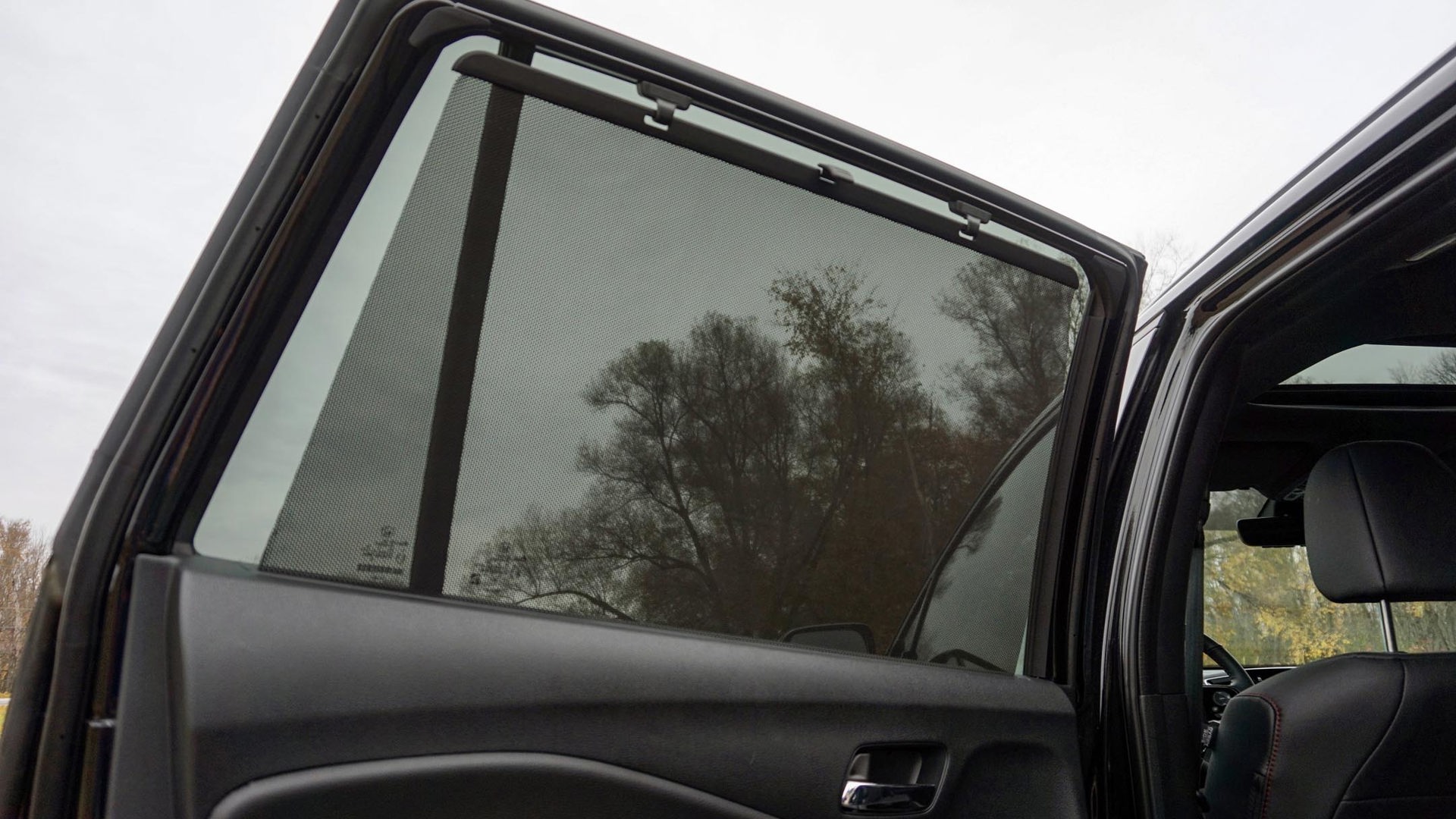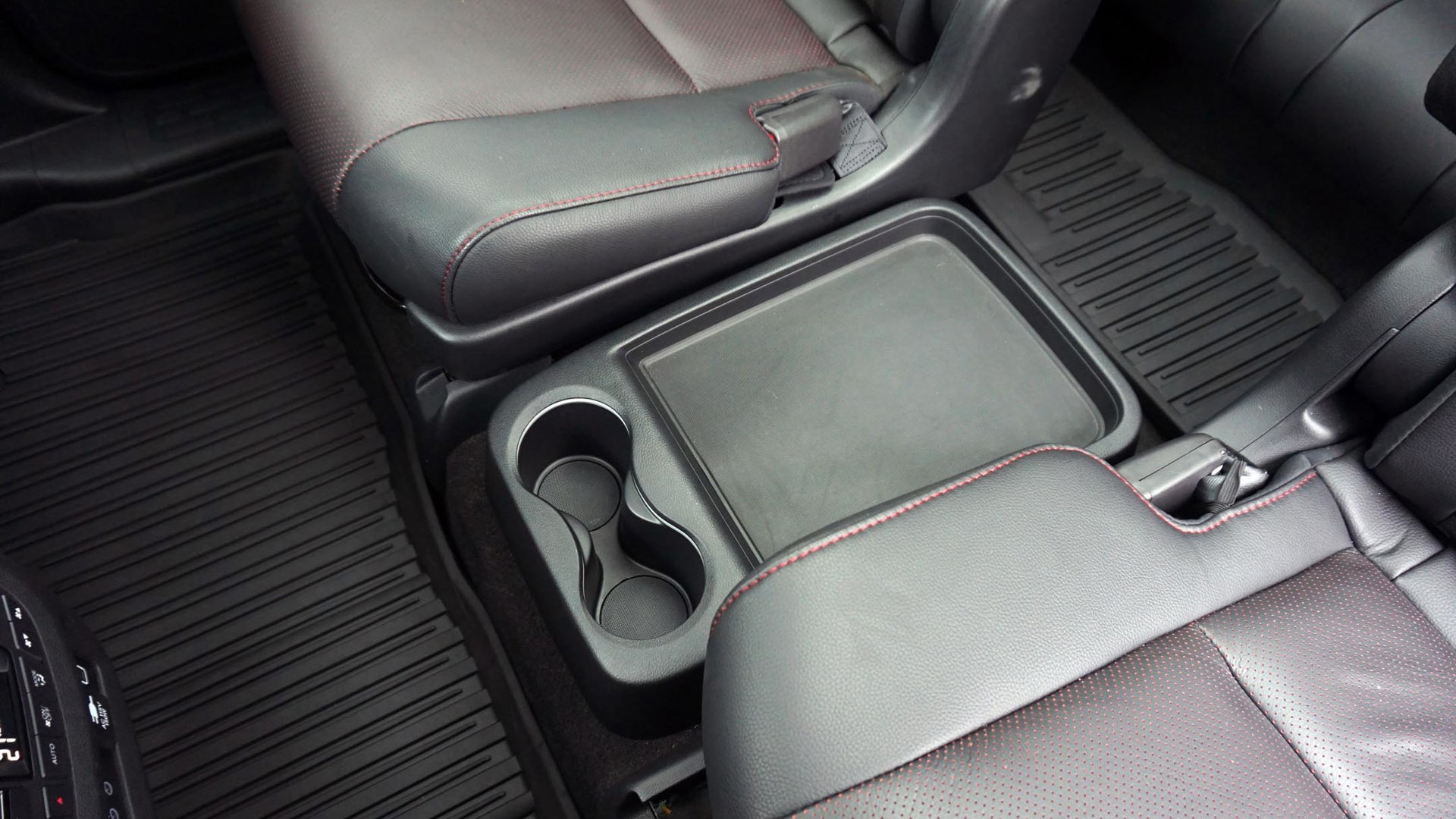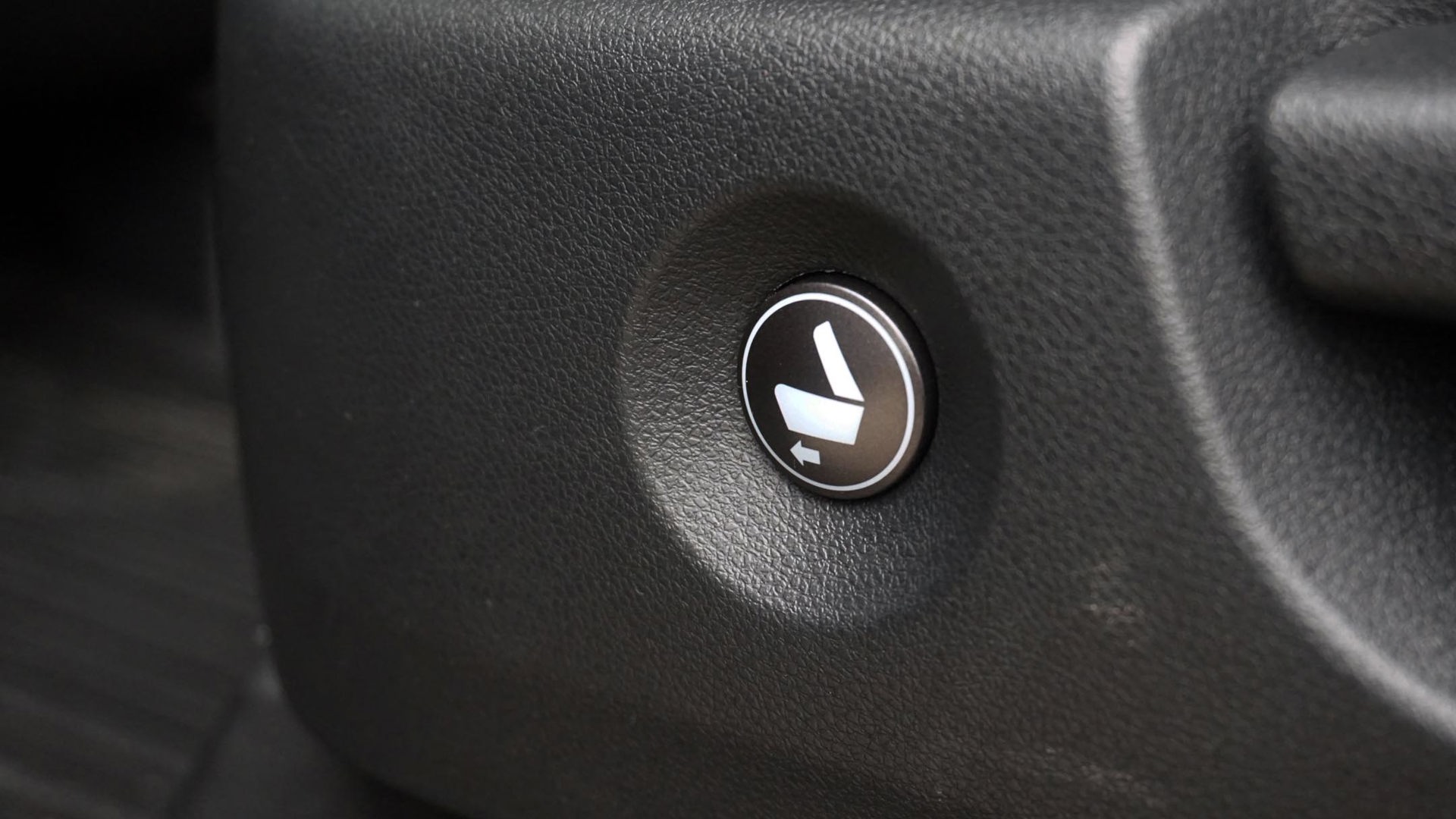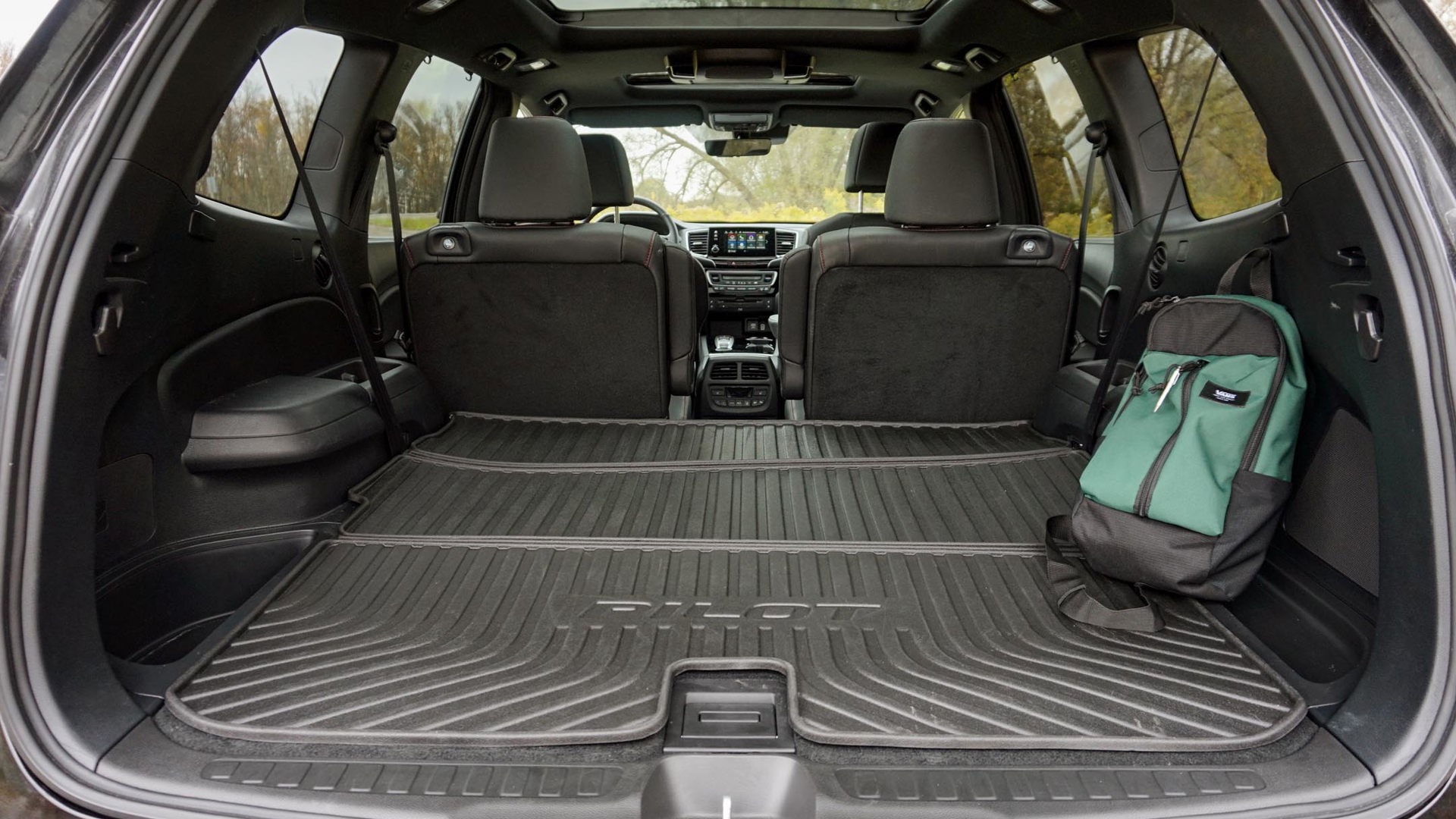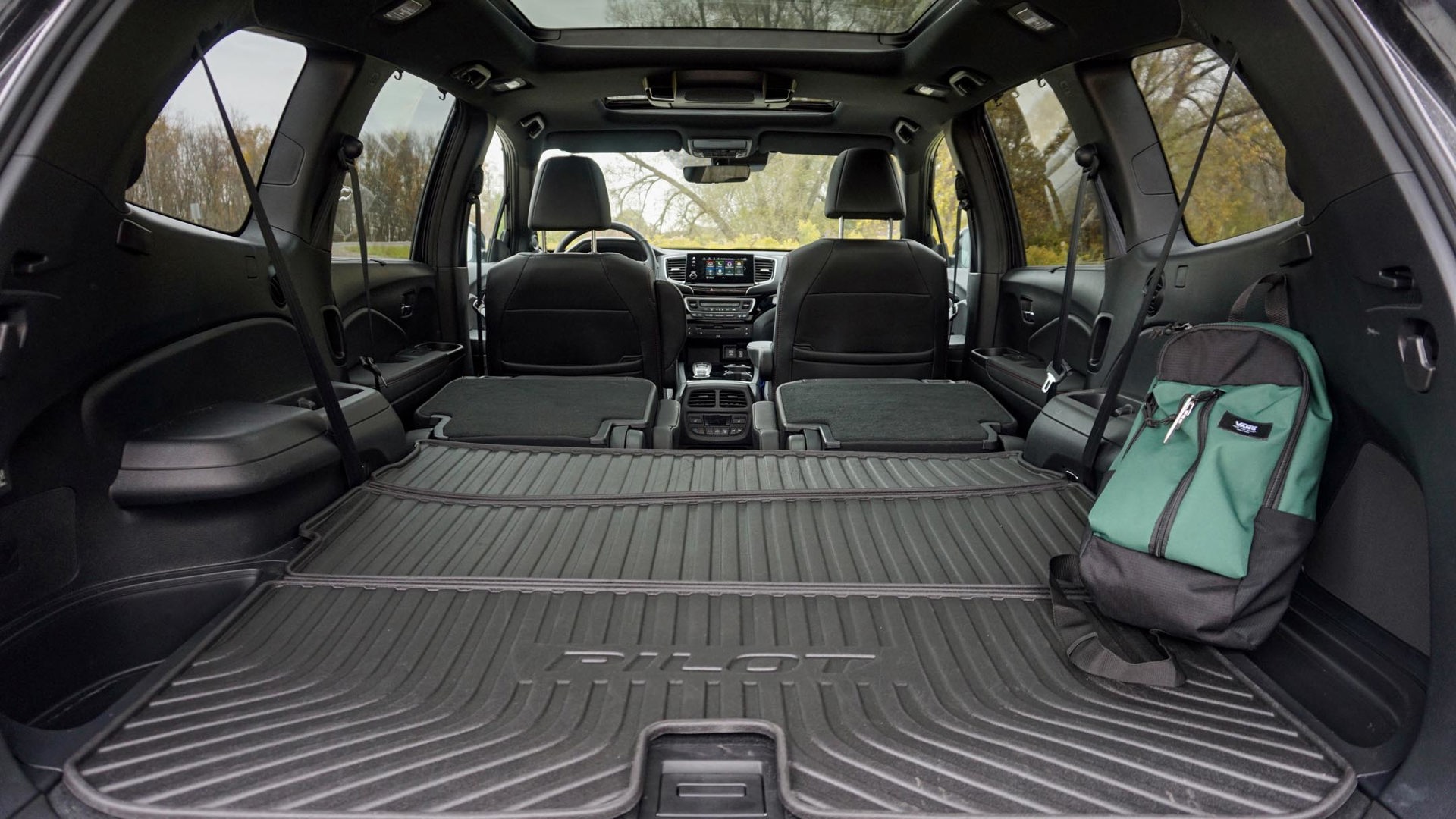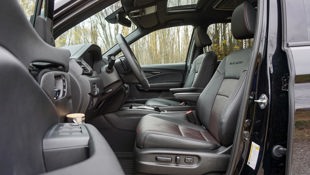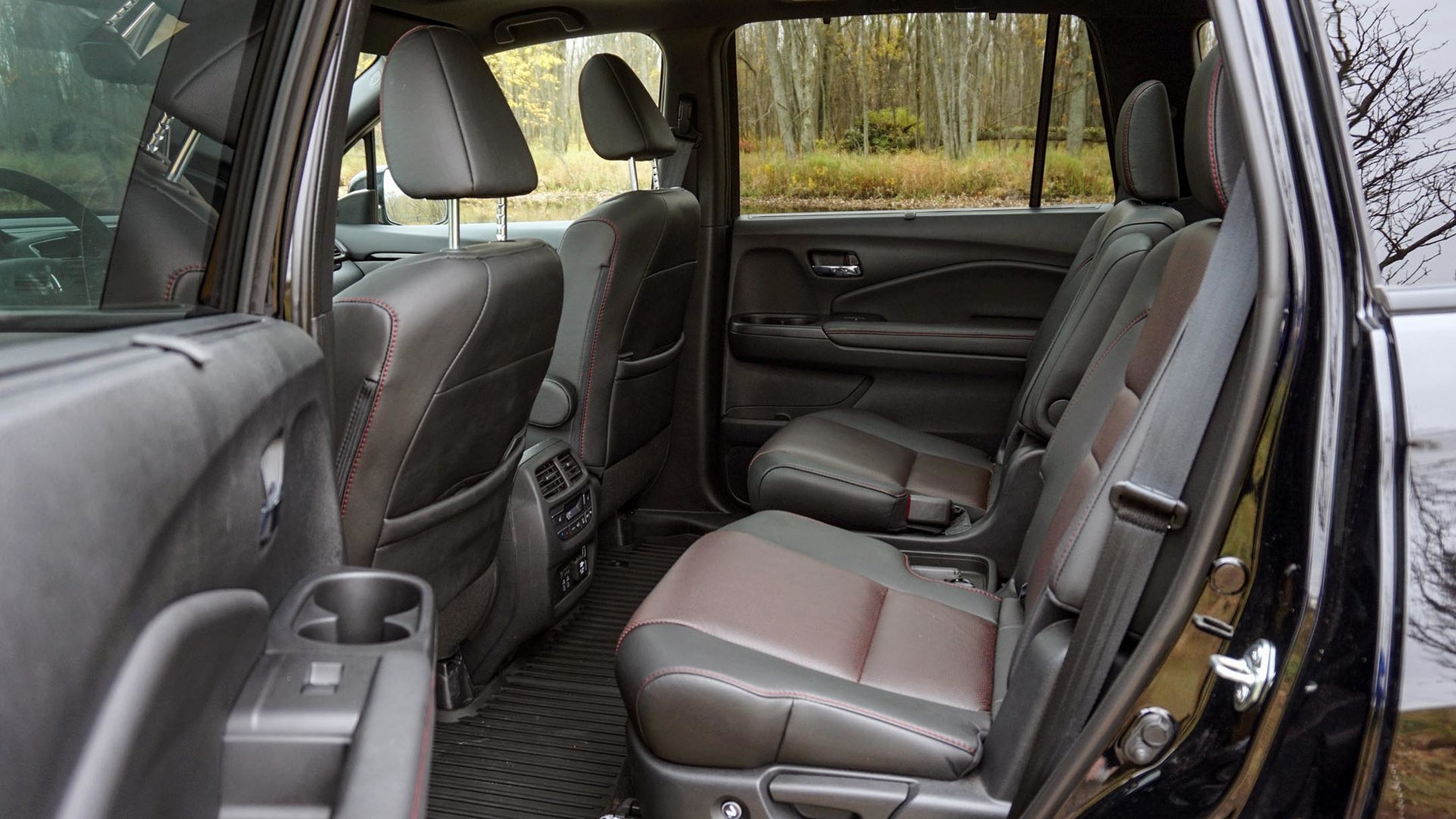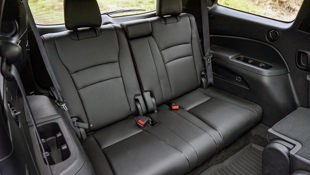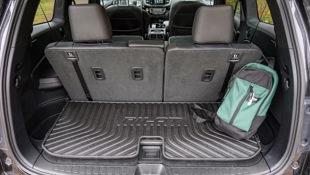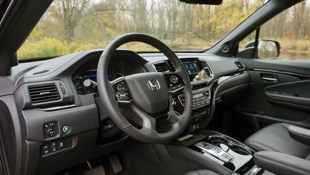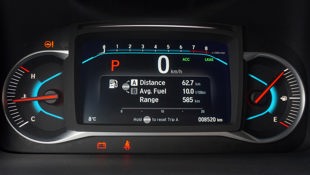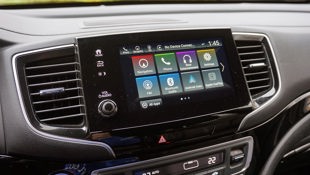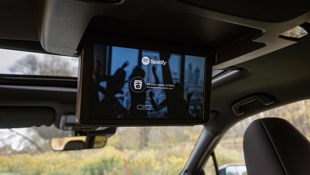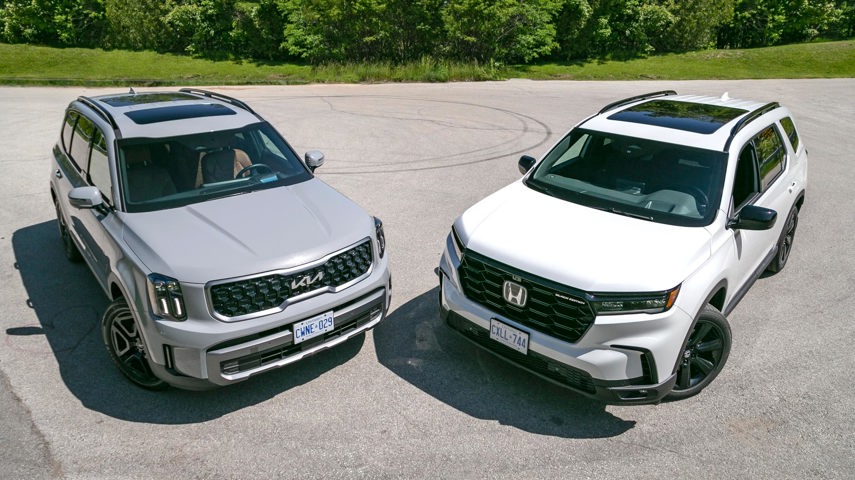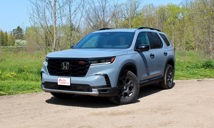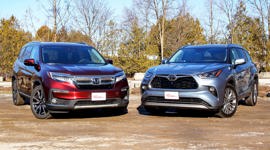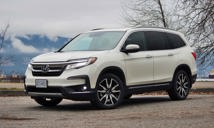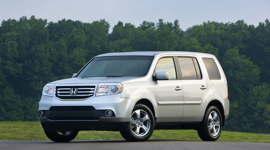 AutoTrader SCORE
AutoTrader SCORE
-
STYLING9/10
-
Safety7/10
-
PRACTICALITY9/10
-
USER-FRIENDLINESS5/10
-
FEATURES9/10
-
POWER8/10
-
COMFORT6/10
-
DRIVING FEEL9/10
-
FUEL ECONOMY8/10
-
VALUE8/10
There’s only one three-row SUV of its kind that offers the same amount of space inside as the 2020 Honda Pilot.
Yet for all the ways it compares to the Volkswagen Atlas, the imposing Pilot counters with the kind of characteristics that make it a fantastic fit for families on the go. Sadly, ongoing infotainment issues continue to haunt Honda, and they’re enough to keep this otherwise outstanding SUV off of autoTRADER.ca’s recommendations list as a result.
Practicality: 9/10
The Pilot is among the largest sport utilities like it on the market, and yet it’s noticeably smaller than the Atlas from the outside. Regardless, it suffers no space-related shortcomings, and even outdoes the big Volkswagen by some measures. The cabin is downright cavernous, and with this tester’s second-row captain’s chairs there’s room enough to sit in the rearmost seats without feeling cut off from what’s happening elsewhere inside. Officially, models like this one have seating for seven, while those with two benches in the back see that capacity bumped to eight occupants. In reality, even with small children relegated to the third row – that’s who these seats are best suited for to begin with – fitting three across the back isn’t recommended (at least not for prolonged periods).
Either way, the second row is nearly as spacious as the seating up front, while small-item storage is equally as abundant. The doors feature relatively small pockets but include a pair of cupholders on each side, while a separate centre console adds two more cupholders and a rubberized surface to keep stuff from sliding around. Unfortunately, the only USB ports for those seated in the second row are located on the backside of the front-seat console bin beneath the HVAC controls, all of which may be challenging for children to reach.
With both rear rows of seats upright, there’s 510 L of cargo room – barely less than the Atlas and its 583 L. Like any SUV of this size, it’s something of a narrow and upright area, but it’s more than adequate for anything this side of a week-long family road trip. There’s also a shallow storage area underneath the floor panel to keep stuff away from prying eyes. With the third row tucked into the floor the space grows to a massive 1,583 L, while the 3,072 L with the second row out of the way is about 10 per cent more than its rival from VW. While the Honda Odyssey is roomier still, the only way to get an SUV more spacious than this is to step up to something like the Ford Expedition.
User Friendliness: 5/10
Unfortunately, there are no quick-release handles or electronic switches to stow the seats from the cargo area like there are in the Expedition, but reconfiguring the cabin doesn’t take long at all. Likewise, tilting and sliding either captain’s chair forward to access the third row is made simple through buttons that do both jobs at once (standard in EX-L Navi and above). It’s a simple feature, sure, but one that takes the usual fumbling and fiddling out of the process altogether, and the Pilot is better for it.
The back doors open wide to provide convenient access to either row of rear seats, though the ride height is such that it’s not quite as easy to climb into as the surprisingly spacious Mercedes-Benz GLB-Class, not to mention the aforementioned Odyssey. Such are the perils of living with a three-row SUV as large as this one. No, it’s not quite in the same realm as the outsized Expedition and its rather necessary power-deployable side steps, but entering and exiting the Pilot is no cinch.
On the opposite end of the spectrum is how approachable the front half of the cabin is, with a simple bank of buttons at the driver’s left knee, a full set of controls on the steering wheel, and an array of switchgear for climate functions – and a corresponding LCD display – just below the head unit. Run through an eight-inch touchscreen, the infotainment interface is fairly straightforward, but it’s plagued by well-documented bugs that didn’t take long to manifest during testing.
The issues experienced in this particular Pilot were much the same as those encountered in the Honda Odyssey tested by autoTRADER.ca earlier this year – interestingly, two vehicles subject to a class-action lawsuit in the United States that stems from similar complaints. In this case, what started as loud static-like noises emanating from the various speakers inside mutated into both the infotainment and gauge cluster screens crashing, followed by periods where no audio source was capable of producing sound at all. At each occurrence, total system resets would do little more than bide time before it happened all over again.
Comfort: 6/10
Adding insult to injury, more often than not there was no way to mute the screeching static spewing from the speakers. During an initial evaluation drive spanning the afternoon the Pilot was picked up from Honda Canada HQ, no less than six times was the audio – Apple Music, satellite radio, or an old-fashioned, over-the-air FM station – interrupted by the irritating system issue. And each time, the only way to end the suffering was to pull over and reboot the head unit (and temporarily disable the digital speedometer in the process), or shut the vehicle off completely. Either way, like clockwork, the problem kept coming back.
It’s unfortunate that the tranquility of the ride was so often interrupted in such a rude way, because it’s not just the outright space the Pilot provides that makes it so special – it’s the relaxing atmosphere, too. Its leather-lined seats may come up short of the living room on wheels that is the Lexus GX, but this three-row would make a great family road trip companion. The seats offer almost no contouring but are comfy nonetheless, and they feature three-stage heat and ventilation up front in this loaded Touring-based Black Edition (heat is standard in every trim). Second-row passengers also benefit from heated seats in top spec, as well as dedicated controls for the tri-zone automatic climate control system that’s quick to warm – or cool – the cabin.
Driving Feel: 9/10
As far as the mechanicals are concerned, the Pilot is everything a three-row SUV like this should be. Its standard all-wheel-drive system is fully automated (though there are different settings for various terrains); the naturally aspirated engine under the hood delivers power with a buttery smoothness; the transmission is well sorted and barely stirs when it shifts; and the suspension, while not perfect, soaks up most of what it encounters well.
While the GMC Acadia Denali and its available adaptive dampers set a high bar for cruising comfort in this class, Honda has engineered an outstanding SUV to drive. The steering is impossibly light for a vehicle this size, making it wonderfully manageable, and the same goes for the driving manners themselves. In fact, if it weren’t for all the space inside, it would be easy to mistake this for the venerable CR-V from the driver’s seat, such is the way it drives around like a much smaller sport utility.
Power: 8/10
This isn’t a particularly peppy SUV, though the 3.5L V6 that powers it is more than capable of moving its mass while being better suited for towing than a turbocharged four-cylinder like the one motivating the Subaru Ascent. (It’s good to pull 2,268 kg (5,000 lb) with the $2,760 tow package that adds a hitch and transmission cooler, or 1,588 kg (3,500 lb) for the cheaper pack that skips the cooling.) Besides, while there’s nothing wrong with wanting to have cake and eat it, too, those after a turn of speed in their three-row family haulers will only truly find what they’re looking for in the Ford Explorer ST, the Dodge Durango SRT – or the forthcoming Hellcat-powered version – or something from a premium brand.
Rather than a 710-hp screamer, the Pilot is much more modest, making do with 280 hp and 262 lb-ft of torque. With output routed to the wheels through a nine-speed automatic transmission in Touring trim (the rest of the lineup relies on a six-speed auto, though all of them get the nine-speed starting in 2021), the hulking Honda gets to where it’s going no faster than it needs to. While the transmission suffers the occasional hiccup under heavy acceleration, it does well to catch higher gears in a hurry to keep engine speed low while responding to requests for more momentum by quickly dropping a cog or two.
Fuel Economy: 8/10
While the all-wheel drive is fully automatic and thus out of the driver’s control – it usually cruises in front-wheel drive to save fuel but shuffles power to the others when accelerating or cornering – the Pilot packs a couple nifty tricks to cut fuel consumption. Simple yet effective, the selectable eco mode scales back throttle response and runs through the transmission’s gears even quicker than normal to keep the revs low, while the six-cylinder engine can run on just four pistons when moving at a modest pace around town or on the highway.
The results are fuel consumption ratings of 12.4 L/100 km in the city, 9.3 on the highway, and 11.0 combined, according to Natural Resources Canada (NRCan). Meanwhile, models with the six-speed transmission do a little worse, coming in at 13.0 L/100 km in town, the same 9.3 on the highway, and 11.3 combined. Either way, that’s a far cry from the incredibly efficient Toyota Highlander Hybrid, but it lands well within range of gas-only competitors like the Hyundai Palisade and Chevrolet Traverse.
Testing over the course of a week saw nearly 600 km accumulated on the odometer, with a good blend of secondary roads and city streets to go with a few highway runs. With eco mode engaged the vast majority of the time, the final tally stood at 10.9 L/100 km.
Safety: 7/10
Honda continues to pack its vehicles with a vast array of advanced safety systems, and the Pilot is no exception. While the federal government has mandated rearview cameras be included in all new vehicles sold in Canada, the Pilot’s provides a few different looks at what’s happening behind it, including one that makes it easier to line up with a trailer. Unfortunately, not even the top Touring trim – nor this Black Edition that’s based on it – benefits from a surround-view monitor system to keep an eye on this expansive SUV, nor is a head-up display available. The absence of both are signs of the Pilot’s age; those same features are offered in newer entries like the Palisade and Highlander.
The list of advanced safety features is robust nonetheless, with forward automatic emergency braking, lane-keep assist, and adaptive cruise control standard on all models. All but base versions add blind-spot monitoring to the mix, too, and most of the systems work well and with limited intrusiveness. However, Honda’s forward collision warning has long been criticized for being a tad sensitive, and that’s certainly the case here, the gauge cluster beeping and flashing in response to oncoming traffic through sweeping corners.
The head unit issues experienced in this particular Pilot also led to some safety concerns, with the rearview camera rendered inoperable at one point during testing when reverse gear was engaged. Worse still, the update intended to fix it as part of a recall campaign – available over the air rather than requiring a service visit – was completed prior to testing, according to a service advisor at a local Honda dealer.
A separate recall is also out on 2018–21 Pilot, 2019–20 Passport, and 2018–20 Odyssey models for their digital instrument clusters that are prone to shutting off sporadically, resulting in the loss of the speedometer – something that happened on a few occasions during testing. A Honda Canada spokesperson said via email that the prescribed fix for the gauge cluster will also take care of the head unit and audio system issues. However, neither is mentioned in the recall notice itself.
Features: 9/10
While it lacks certain features offered in more modern entries – surround-view monitor; head-up display; and third-row USB ports, to name a few – the Pilot is a well-equipped family hauler. Aside from all that safety stuff, every trim gets heated exterior mirrors, a front wiper de-icer, LED head- and taillights, tinted windows, and alloy wheels outside, and a tri-zone automatic climate control, heated front seats, push-button start, an eight-inch touchscreen, and Apple CarPlay and Android Auto inside.
Moving up to the EX trim sees incremental additions like a sunroof and roof rails, while the EX-L Navi adds – you guessed it – built-in navigation, leather upholstery, a heated steering wheel, heated second-row seats with one-touch slide functionality, second-row sunshades, parking sensors front and rear, and a power tailgate. Meanwhile, the loaded Touring trim adds the choice of bench or captain’s seats in the back – the latter is a $400 upgrade – to go with a rear-seat entertainment system, a household outlet in the back, a wireless phone charger up front, ventilated front seats, and upgraded leather upholstery. Outside, there’s larger 20-inch alloy wheels, auto-levelling headlights, rain-sensing wipers, and hands-free functionality for the tailgate.
Styling: 9/10
An extra $1,500 transforms the Pilot Touring seven-passenger into the Black Edition model seen here that makes the burly Honda something of a menacing people-mover. It’s a cheap trick, sure; but blacked-out accents go a long way, giving an otherwise ordinary SUV some character. Everything from the wheels to the roof rails – and the grille and bumper garnish – gets dipped in a black finish and set against Crystal Black or Platinum White pearl paint jobs, while the perforated leather inside adds a hint of red in the first two rows (a fixed panoramic glass panel also gets added to the back half of the roof).
Settling on anything else results in a rather ho-hum ride, though it’s not unattractive. Rather, it’s simply run-of-the-mill, and the Pilot could bear the badge of just about any mainstream automaker. Inside, too, is best described as humdrum, eschewing ostentatiousness in favour of durability. That seems like a worthy sacrifice for families who won’t have to fret over spills and scuffs like they might in some competitors with their light-coloured upholstery and glossy surfaces.
Value: 8/10
Its starting MSRP of $41,290 before fees and taxes makes the Honda Pilot a pricier proposition than most competitors, though only barely so. The cheapest gas-powered Highlander starts at $39,990, but that’s for a front-wheel-drive model; all-wheel traction pushes the starting price to $43,490. Ditto the Palisade that’s priced at $38,499, but jumps to $40,499 with all-wheel drive. The all-wheel-drive-only Atlas starts at $40,095, but moving on through the rest of their respective lineups sees their asking prices equalize all the way up through the $55,190 Pilot Black Edition. It’s not exactly cheap, but it’s not out of line with the competition in this generally expensive segment.
The Verdict
For all the 2020 Honda Pilot does right – which is an awful lot, if that hasn’t been clear to this point – there are those in-vehicle tech issues lurking not-so-silently in the background. And the worst part about it all is the unpredictability. Earlier this year, autoTRADER.ca contributor Sami Haj-Assaad evaluated an eight-passenger Pilot Touring as part of a comparison with the loaded Highlander Limited and experienced no such problems over the course of a week. Yet this reviewer had nothing but trouble in the Odyssey with the same infotainment system, and reports abound about similar experiences over the last few years.
The Honda Pilot easily ranks among the best three-row SUVs on the market for its super-sized, family-friendly space that so seamlessly meshes with an ideal driving demeanour and outstanding mechanicals. But until Honda gets its head unit woes under control, it’s a high-priced gamble we can’t in good conscience encourage shoppers to take.
| Engine Displacement | 3.5L |
|---|---|
| Engine Cylinders | V6 |
| Peak Horsepower | 280 hp @ 6,000 rpm |
| Peak Torque | 262 lb-ft @ 4,700 rpm |
| Fuel Economy | 12.4 / 9.3 / 11.0 L/100 km cty/hwy/cmb |
| Cargo Space | 510 / 1,583 / 3,072 L behind 3rd/2nd/1st row |
| Model Tested | 2020 Honda Pilot Black Edition |
| Base Price | $55,190 |
| A/C Tax | $100 |
| Destination Fee | $1,840 |
| Price as Tested | $57,130 |
|
Optional Equipment
None
|
|
